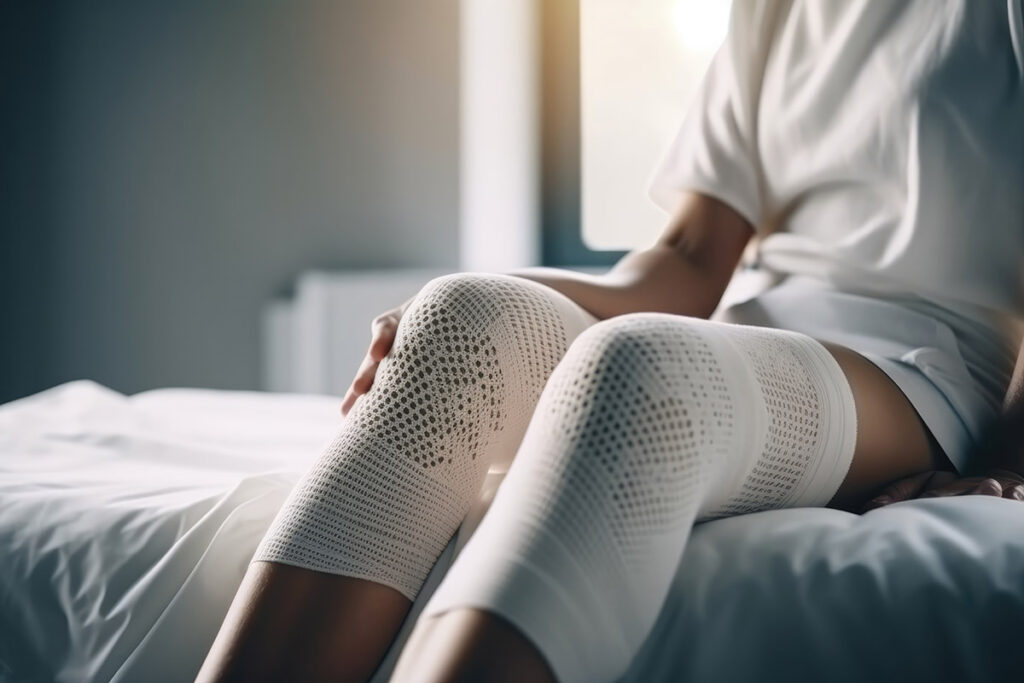

Physicians
Search

GENERAL INFORMATION
Runner’s knee is a common overuse injury. It is experienced as a dull pain felt over, under, or around the kneecap (patella). It is also known as the patellofemoral pain syndrome (PFP). Runner’s knee often happens in runners and other athletes from overuse. But it can also affect other people due to structural defects of their legs or feet that cause poor biomechanics and alignment issues.
During knee movement, the underside of the patella runs along the groove of the lower end of the thigh bone (femur), called the trochlear groove.
Any combination of the following factors can wear down the tissue between the patella and the trochlear groove. Here are some causes of the runner’s knee:
1.) Repetitive movements such as running, squatting, and jumping that lead to overtraining.
2.) Misalignment of the patella to the trochlear groove due to:
3.) Poor support to the feet and knees
Any, or the combination, of the causes above can lead to pain and worsening in the knee. Here are the common symptoms experienced by individuals with runner’s knee:
Runner’s knee can look like other conditions, and a proper diagnosis is essential to treat the knee accurately. The doctor will begin with a patient interview and review their medical history. A physical knee examination will be performed next. They will test for knee pain in specific movements and check for swelling in the knee.
They may also order imaging studies and other tests for your knee joint:

Different factors cause different types of scoliosis. Below, we start with the most common type of scoliosis.
Most people, especially athletes, worry about being hindered by their injuries. Without proper treatment that directly addresses the causes of runner's knee and due diligence, their full recovery can take far longer.
The average recovery time for runner's knee is 4-6 weeks. But the recovery for each person will depend on the following:
Cause of Runner's Knee
The cause of runner's knee must be confirmed to treat it effectively. As of 2018, evidence-based treatment has proven the following:
Physical therapy is also essential for managing pain through taping, manual therapy, and/or other interventions combined with prescribed exercises. Physical therapy and exercises are prescribed after pain and swelling have subsided.
Severity of the Injury
If runner's knee is intervened early with proper treatment and training modifications that address its causes, a person can return to pain-free recovery in two weeks. However, if a person powers through their injury for weeks, they can worsen it and require a longer recovery time.
If you need to rule out more severe conditions and are unsure whether your knee pain is from runner's knee, your doctor can examine you for other injuries in the knee joint, such as ACL tears or fractures.
Schedule a visit to the doctor if a forceful impact caused the knee injury or shows the following signs and symptoms:
Please go to urgent care if a forceful impact causes your knee pain and exhibits the following:
Yes, you can still run with this injury. After proper treatment addresses the causes of your injury, your training or activity must be modified to prevent pain from returning. Low-impact cross-training exercises like yoga, cycling, and pool running maintain fitness and improve endurance and aerobic capacity.
Losing Weight
According to a study by Arthritis & Rheumatism, losing a pound of weight can remove four pounds of pressure on the knees. That means if a person loses 10 pounds, they remove 40 pounds of pressure on their knees.
Proper Stretching and Strengthening
Before starting the training or other main activities, stretching exercises for the hamstrings and Achilles tendons must be done first. Targeted training of VMO, ITB, and hip rotators and abductors can also be added for maintenance.
Warm-ups and Cooldowns
Gradually increasing the activity level allows the muscles to adapt to good blood flow. Finishing the activity with light jogging and stretches allows gradual recovery and avoids a tense state.
Proper Footwear
Proper footwear can correct the alignment of the kneecap to the trochlear groove. Quality running shoes can correct flat feet and absorb shock upon heel strike.
Proper Running Form
A proper running form keeps the core tight to prevent leaning too far forward or backward. Keeping knees bent when they momentarily bear the weight while running is vital for proper shock absorption and injury prevention.
Runner’s knee can hinder a person from the activities they love and from their activities of daily living. At Puget Sound Orthopedics, we treat patients with holistic care, involving other disciplines to promote full recovery and wellness. With the best up-to-date practice techniques that are timely and cost-effective, we aim to improve our patients’ musculoskeletal health and education. Contact us today to receive the same leading-edge and compassionate care.
